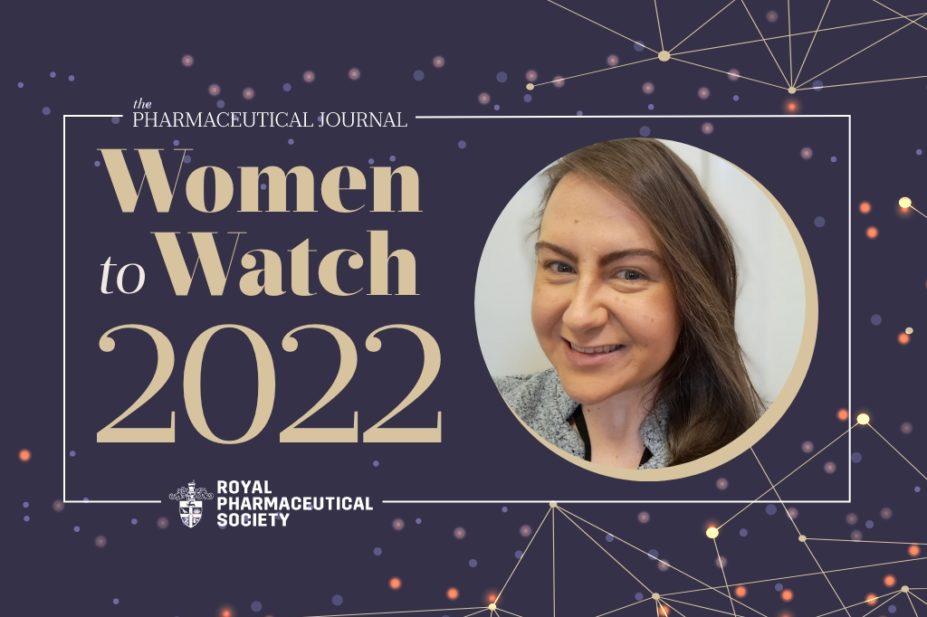
Emma Rae / Shutterstock.com
It was working in a Tesco pharmacy part-time, while doing her degree in sociology and social policy, that changed Emma Rae’s life.
When she struggled to find a permanent job after graduation, her pharmacy colleagues encouraged her to qualify as a pharmacy technician. And she has gone on from there to forge an important public health role in her local community.
Rae worked in both the community and hospital sectors as a senior pharmacy technician, including a clinical role working on wards, before COVID-19 hit. The pandemic made her increasingly aware of the impact of health inequalities and she decided to go back to university to study for a Masters in public health.
In December 2020, in addition to her studies and her job at LloydsPharmacy, she took on a role as health promotion officer at NHS Tayside, perfectly marrying her public health and pharmacy background, and leading a team to support smoking cessation services in community pharmacy. Their remit is to meet targets set by the Scottish government for smoking cessation, which include increased rates of successful smoking quits in the most deprived areas.
When I came into post, a big focus was on working with community pharmacy, to upskill, develop and push the service as much as possible
Rae trains other pharmacy professionals right across the almost 300 square miles of the health board, does outreach work and takes on smoking cessation clients herself. “When I came into post, a big focus was on working with community pharmacy, to upskill, develop and push the service as much as possible. We’ve created a number of evening sessions and the first one had over 80 people attend, the uptake has just been really great.”
She says tobacco is an issue of social justice, as it links with physical, mental and financial wellbeing, and that there is no feeling like watching people gain the confidence to say “no”.
“I still work in community pharmacy and I know the pressures that they’re under at the moment and have been throughout COVID. But I do see the role that community pharmacy has to play in addressing these inequalities” says Rae.
The Scottish government has set a target of having a smoke-free generation by 2034, which means public health teams are aiming to reduce tobacco use to about 5%; a tough ask, when the rate is currently about 16%.
When working with clients with anxiety who are trying to quit smoking, Rae has gone “above and beyond” in providing them with anxiety/stress aids, colouring books and spending more time counselling them. She discovered a few years ago that practising mindfulness helped her deal with her own polycystic ovary syndrome and it is something she recommends to her own smoking cessation clients.
“I practice mindfulness for five minutes in the morning and five minutes in the evening, and it sets me up for the day and it helps me finish for the day,” she says. That, alongside regular exercise, has really helped her manage her symptoms, but it took a long time to find something that stuck — it is an experience she uses to help people successfully quit smoking.
But it isn’t always easy to get people to quit, as patients who consult in pharmacies may have complex health, mental and social challenges: “We’ve had phone calls about how to support people with eating disorders or vulnerable people with dementia looking to quit. We work a lot in the background, trying to get as much information to community pharmacy as possible to support individuals throughout this journey.”
Over the next couple of years, Rae’s goal is to change attitudes on the value of smoking cessation services. “We’re starting to see tobacco addiction embedded within core practice, and pharmacies really believing what they’re doing is making a difference. They’re helping to support people to overcome one of the biggest obstacles in their life.”
Panel comments
“She is making such a difference to her local community — great to see”
“Going above and beyond for her clients”
“Great to hear about her co-running public health in Dundee while also studying”
Meet the rest of The Pharmaceutical Journal’s Women to Watch 2022 here
You may also be interested in

Pioneering pharmacy professionals celebrated in 2022 ‘Women to Watch’ list

Andreea Blaga
